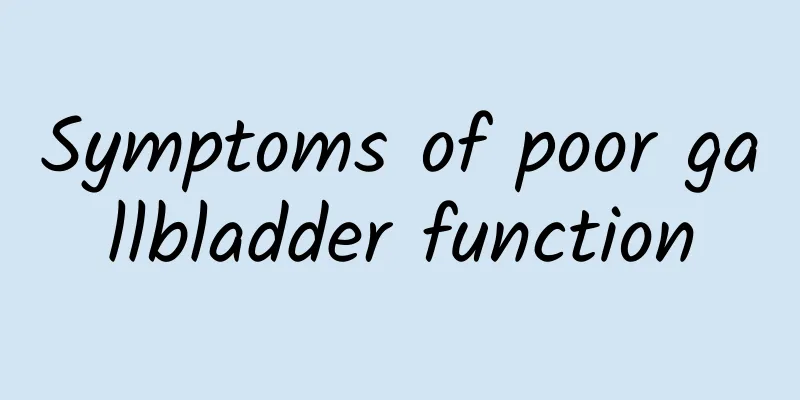Uncover the secrets of gout treatment methods, gout causes and prevention

|
Gout is a disease that causes joint pain. Gout usually occurs with changes in the weather. For example, when it rains, is cold, or is humid, the patient's condition will worsen. People with abdominal obesity, hyperlipidemia, hypertension, diabetes, cardiovascular disease and other diseases are prone to gout. How to treat gout? Causes The most important biochemical basis of gout is hyperuricemia. A normal adult produces about 750 mg of uric acid per day, of which 80% is endogenous and 20% is exogenous. This uric acid enters the uric acid metabolic pool (about 1200 mg). About 60% of the uric acid in the metabolic pool is metabolized every day, of which 1/3, about 200 mg, is broken down and metabolized by the intestines, and 2/3, about 400 mg, is excreted through the kidneys, thus maintaining the stability of uric acid levels in the body. Problems in any link can lead to hyperuricemia. 1. Primary gout It is mostly hereditary, but only 10% of people have a family history of gout. Excessive uric acid production accounts for 10% of the causes of primary hyperuricemia. The main causes are purine metabolic enzyme defects, hypoxanthine guanine phosphoribosyltransferase (HGPRT) deficiency and hyperactivity of ribosylphosphoribosyl pyrophosphate (PRPP) synthetase. Primary renal uric acid excretion reduction accounts for about 90% of primary hyperuricemia. The specific pathogenesis is unclear and may be a multi-gene genetic disease, but organic renal diseases should be ruled out. 2. Secondary gout Refers to a clinical manifestation secondary to other disease processes and may also be caused by certain drugs. Myeloproliferative diseases such as leukemia, lymphoma, multiple myeloma, polycythemia, hemolytic anemia and cancer can lead to accelerated cell proliferation, increased nucleic acid conversion and increased uric acid production. Malignant tumors cause massive cell destruction after radiotherapy and chemotherapy, and nucleic acid conversion also increases, leading to increased uric acid production. Kidney diseases including chronic glomerulonephritis, pyelonephritis, polycystic kidney disease, lead poisoning and advanced hypertension can cause impaired glomerular filtration function, which can reduce uric acid excretion and lead to increased blood uric acid concentration. Drugs such as thiazide diuretics, furosemide, ethambutol, pyrazinamide, low-dose aspirin and niacin can competitively inhibit the excretion of uric acid by the renal tubules and cause hyperuricemia. In addition, renal transplant patients who take immunosuppressants for a long time may also develop hyperuricemia, which may be related to the fact that immunosuppressants inhibit the excretion of uric acid in the renal tubules. Clinical manifestations Gout is more common in middle-aged men, with only 5% in women. Most of them are postmenopausal women, and gout tends to occur in younger people. The natural course of gout can be divided into four stages, namely, asymptomatic hyperuricemia stage, acute stage, intermittent stage, and chronic stage. Clinical manifestations are as follows: 1. Acute gouty arthritis Most patients have no obvious signs before an attack, or only experience fatigue, general malaise, and joint pain. A typical attack often begins with awakening the patient in the middle of the night due to joint pain. The pain progressively intensifies, reaching a peak in about 12 hours, and feels like tearing, cutting, or biting, which is unbearable. The affected joints and surrounding tissues are red, swollen, hot, painful, and have limited function. Usually resolves spontaneously within a few days or 2 weeks. The first attack often affects a single joint, some of which occur at the first metatarsophalangeal joint. Later in the course of the disease, some patients also have involvement of this area. The next most common joints are the dorsum of the foot, heel, ankle, knee, wrist and elbow. The shoulder, hip, spine and temporomandibular joints are less frequently affected. Multiple joints may be affected at the same time, manifesting as polyarthritis. Some patients may have systemic symptoms such as fever, chills, headache, palpitations and nausea, which may be accompanied by increased white blood cell count, increased erythrocyte sedimentation rate and increased C-reactive protein. 2. Intermittent attack period Gout attacks can last for several days to several weeks and then resolve on their own, usually with no obvious sequelae, or leaving local skin pigmentation, desquamation, and itching. They then enter an asymptomatic interval period and relapse after several months, years, or more than ten years. Most patients relapse within one year, and the episodes become more and more frequent, affecting more and more joints, and the symptoms lasting longer and longer. The affected joints generally develop from the lower limbs to the upper limbs, from the distal small joints to the large joints, and the joints such as the fingers, wrists and elbows are affected. A small number of patients may be affected in the shoulder, hip, sacroiliac, sternoclavicular or spinal joints, and may also affect the bursae, tendons and tendon sheaths around the joints. The symptoms tend to be atypical. A small number of patients have no intermittent period and present with chronic arthritis symptoms after the initial onset. treat Primary gout lacks etiological treatment and cannot be cured. The purpose of gout treatment is: 1. Rapidly control acute attacks; 2. Prevent recurrences; 3. Correct hyperuricemia and prevent joint damage and kidney damage caused by urate deposition; 4. Surgically remove tophi and perform corrective surgery on damaged joints to improve quality of life. 1. General treatment Eat a low-purine, low-energy diet, maintain a reasonable weight, quit drinking, drink plenty of water, and drink more than 2000ml of water per day. Avoid overeating, excessive drinking, cold and dampness, excessive fatigue and mental stress, wear comfortable shoes, prevent joint injuries, and use drugs that affect uric acid excretion such as certain diuretics and low-dose aspirin with caution. Prevent and treat concomitant diseases such as hypertension, diabetes and coronary heart disease. 2. Acute gouty arthritis Rest in bed, elevate the affected limb, apply cold compress, and resume activities only after the pain is relieved for 72 hours. Seek treatment as early as possible to prevent prolonged illness. The following drugs should be used early and in sufficient amounts, and dosage should be gradually reduced after effectiveness is achieved. Do not start uric acid-lowering treatment during an acute attack. Those who are already taking uric acid-lowering drugs do not need to stop taking them during an attack, so as to avoid fluctuations in blood uric acid, prolonging the attack time or causing metastatic attacks. prevention For patients with asymptomatic hyperuricemia, prevention of gout attacks is mainly based on non-drug treatment, including diet control and abstinence from alcohol, and avoiding the use of drugs that increase blood uric acid such as diuretics, low-dose aspirin, compound antihypertensive tablets, pyrazinamide, nifedipine and propranolol. If blood uric acid is still higher than 9 mg/dl after dietary control, uric acid-lowering drugs can be used. For patients in the intermittent period who have experienced acute gouty arthritis, recurrence of gout should be prevented. The key is to control the blood uric acid level to the standard through diet and drug treatment. In addition, they should pay attention to avoid strenuous exercise or injury, control weight, drink plenty of water, and alkaline urine for a long time. |
<<: Why do people get hemorrhoids? What are the causes of hemorrhoids?
>>: Hemorrhoidal polyps should not be taken lightly. What are the symptoms of hemorrhoidal polyps?
Recommend
Take note of these benefits for those who take naps in the summer!
Many friends think that naps are just to make up ...
What is the cause of nipple inversion?
A woman's breasts are not only a representati...
Treatment of tinea capitis, Chinese medicine remedies
Tinea capitis is a fungal skin disease that many ...
Difference between Rubella and Eczema
In daily life, many people are accustomed to conf...
What medicine can cure ear congestion quickly?
When your parents get older, it is very easy for ...
What are the symptoms of bile duct dilatation?
Biliary dilatation is very harmful to patients. M...
Symptoms of autonomic dysfunction
Many people may think that this disease belongs t...
What should I do if I have menstruation but no ovulation? Pay attention to these issues in daily life
We all know that ovulation plays an important rol...
Can cupping help slim down your calves?
Cupping is a relatively traditional treatment and...
The blood vessels on the arms are obviously blue
Compared to other parts of the body, many people ...
Chinese patent medicine for insomnia caused by stomach disharmony
Insomnia due to gastrointestinal dysfunction refe...
Dengue fever test
Dengue fever is a relatively serious viral infect...
Can drinking vinegar lower blood pressure?
In life, people often use the word "jealous&...
What is the method of TCM to treat testicular cancer?
Traditional Chinese medicine treatment for cancer...
What is sweat steaming
Sweat steaming is a common leisure and fitness ac...









